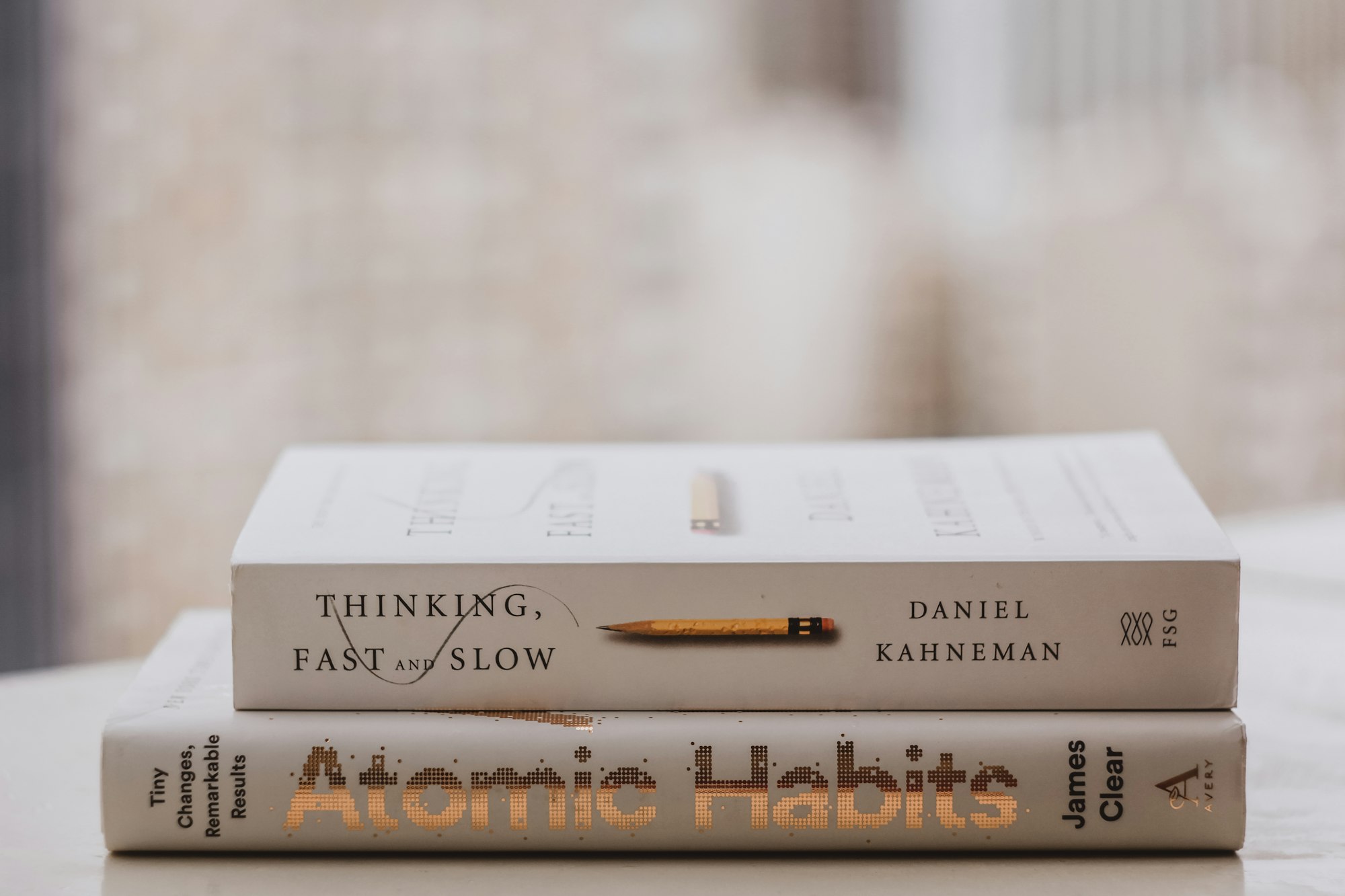Atomic Habits
Book review of Atomic Habits: An Easy and Proven Way to Build Good Habits and Break Bad Ones, by James Clear.

Finding it difficult to start a new good habit or to give up an existing bad habit? This book may be what you are looking for. James Clear gives practical suggestions for both starting good and breaking bad habits with some great examples from real life to illustrate the lessons.
The atomic habits of the title are small, regular, positive habits that may appear to have little effect individually, however, when they are continued regularly for many days, build up into something that has a noticeable positive effect. Targetting small improvements makes them easier to incorporate into your life and thus more likely to become a part of your daily identity.
A key idea in the book is called habit stacking, which uses an existing habit to build in something new. Take something you always do each day – it could be something as simple as tying your shoelaces – and then add something that you'd like to do more often, like meditating for a minute. When you finish tying your shoelaces each day, that's your cue to do the new habit.
The author breaks the skill of forming a new habit down into four simple laws: make it obvious, make it attractive, make it easy, make it satisfying. Each law has a set of tactics that can be used to create a new habit in easy steps.
The reverse is also true. To break a bad habit such as watching too much television, you apply the reverse of the laws. I liked the example of locking the TV remote in a difficult to reach place to make it difficult to turn on the TV.
Each of the laws relates to one of the phases in the habit loop: cue then routine then reward. If something is obvious then you will be reminded of the cue when you encounter it. Like laying out your running gear next to you bed might give you the push you need to go for a jog first thing in the morning. The fact that your gear is already gathered and laid out makes it easy to simply put it on and get into the routine.
One piece of advice that I've taken to heart is to keep a new habit short. James suggests that two minutes should be all that you try to do at first. This seems hardly enough time to do anything much. If your new habit was to go running it barely gives you time to lace up your runners. It probably depends on how alien the new habit is to you. If you have never jogged in your life before, simply getting into the mindset that you are a runner can take some time. Use the two minute routine to build that identity each day before trying to extend the habit.
The habit that I am trying to form includes my daughter. She is struggling a little with how maths is taught in her school and has put up barriers to new ideas. I want to try to break her out of the mindset that she can't do maths. My tactic is to try to build up a daily habit of just looking and talking about maths with her.
When I suggested doing maths every day with her before it met with a lot of resistance, however, and we never got started. I was able to show her a few concepts from a book called Mathematical Mindsets written by Jo Boaler, which encourages teaching maths differently to the fixed learning plans used in schools, which can be one size fits all. My daughter loved the exercises we did, but she resisted setting half an hour aside to repeat the practice.

This time I asked for just two minutes of her time. It worked. I will not be able to cover much maths in a few minutes each day, but the little gains we will make will add up quickly. I have two aims in mind. The first is to introduce the topics that she is soon going to be learning such a sets, algebra, real numbers et cetera, before she sees them in her lessons. The idea is that this will make the content feel familiar when she gets to it with her class, and she will not feel intimidated by new material.
The other benefit is to build up her confidence that she can do mathematics. Even a small piece of maths each day, an atomic habit to be sure, will build up her ability nicely. The compound effect will begin to tell in both what she knows and how she approaches the subject.
What about the laws? I'm keen to do this habit first thing in the morning, chaining it so it occurs just after she is dressed and breakfasted for the day. On school days this should be pretty obvious and I will figure out a similar cue for the weekends. This should help to Make it Obvious and to Make it Easy.
I'm lucky that I have been able to convince her that she can get maths if she tries, and she does want to, so this makes the habit Attractive. The two-minute ritual is what is going to make it easy. I have a whiteboard in my home office so it is simply a matter of drawing something together and discussing it for a moment.
The Make it Satisfying rule is more difficult. I cannot cover enough material in two minutes each day to solve satisfying problems. I have a calendar on the wall and I tick it off each day whenever I complete my writing target. My current streak is over one hundred days and it is satisfying for me to place that new mark on the wall. After each lesson, I have encouraged my daughter to place a tick mark for herself in a different colour. I'm hoping that this will be enough of a satisfaction for her to keep coming back and building that streak.
A Word of Warning
There is a down side to habit formation. When something is habitual you tend to do it on autopilot. I've found that when I began to play piano again after a twenty-five year gap, at first it came easy to me. But even after playing daily for several months, I could not master some of the pieces that I wanted to play. What I was missing was focused practice and this is what I used to have when I had a piano teacher who would make me do exercises and repeat difficult sections of a piece until I got it right. Simply playing every day will only get you so far; after a while you need to targeted practice to excel at a skill.
I mentioned above that I try to write every day. Sometimes this is struggle and sometimes easy, but rarely do I focus my writing to try to improve one aspect. I have completed several Audible courses relating to writing in the past and each had a set of exercises after each lesson to try to reinforce the lesson content. I need to figure out how to incorporate a new focused writing exercise into my daily routine. Sticking with James's advice, it needs to be something that I can do in two minutes.
Another pitfall is to not review things from a wider perspective. If you have used the advice in the book and built a number of good atomic habits, how do you know that all of them put together equals a positive result for you and who you want to be? Regularly looking at the big picture is the only way to make sure that you are on the right course.

